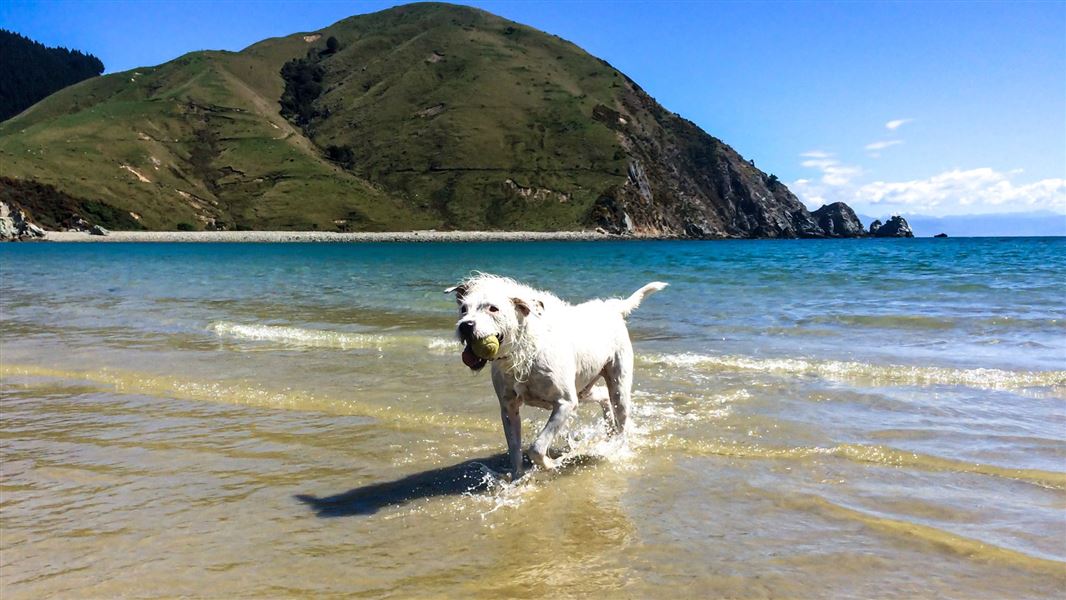On this page:
Where to look out for wildlife
Birds, seals, and other wildlife are common on Nelson/Tasman beaches. But there are four main species to look out for when dog walking.
Eastern bar-tailed godwit/kuaka
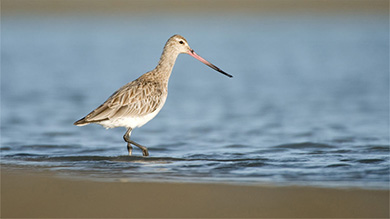
Eastern bar-tailed godwit/kuaka spend most of their time in harbours and estuaries
Image: Andrew Walmsley | ©
The Eastern bar-tailed godwit is one of our most notable travellers.
Breeding aged birds travel to the Alaskan artic in March, then return to New Zealand to spend spring and summer foraging and resting. Non-breeding birds stay in New Zealand all year round.
These birds make their homes in harbours and estuaries. They can be found from Parengarenga Harbour in Northland, to Awarua Bay in Southland.
In the Nelson/Tasman region you may come across godwits at:
- Golden Bay's beaches, from Farewell Spit to Wainui,
- Motueka Sandspit, Marahau and
- sites in the Waimea Inlet, such as Nelson Haven, Bell island and Sand Island.
Little penguin/kororā
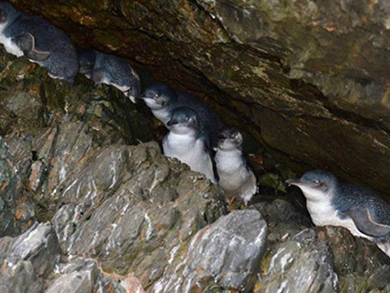
Kororā often roost and nest in rocky areas
Image: Shellie Evans | ©
Kororā live and breed all around our coastlines, from Northland to Stewart Island/Rakiura and most places in-between. They’re vulnerable when moving between the sea and their nest at dusk, so be aware on your after-work adventures with your dog.
The Nelson/Tasman region is home to many kororā. Though you may not see them as they can be very secretive. They're widespread along the entire coastline of Nelson/Tasman so keep an eye out on any beaches.
Banded dotterel/pohowera
The banded dotterel is the most common of the plovers along our coasts. But they are declining because of predators and disturbance by humans.
During the breeding season these birds can be found from Spirit’s Bay in Northland to Mason Bay on Rakiura. Many go even further afield to offshore islands.
They migrate farther north to harbours and estuaries in winter, and prefer light vegetation over bare rock or gravel.
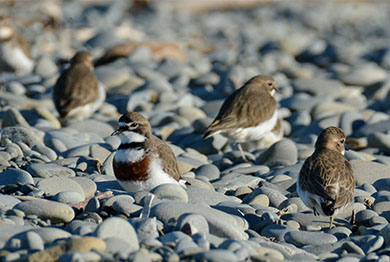
A group of banded dotterel on a beach.
Image: Shellie Evans | ©
In the Nelson/Tasman region banded dotterel can be found along the entire coastline of Nelson Tasman. They also are likely to be seen at
- Boulder Bank
- Delaware Spit
- Wakapuaka Flats
- Kina Peninsula
- Rototai
- Paton's Rock
- Motueka Sandspit
- Marahau, and
- Awaroa Bay.
Variable oystercatcher/tōrea
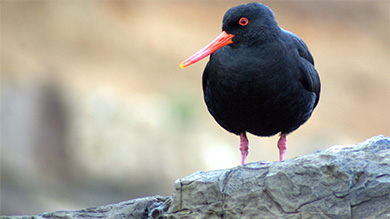
A variable oystercatcher/tōrea near the sea
Image: Sam O'Leary | ©
Variable oystercatchers can be found around much of our coastline. They breed mainly on sandy beaches, sandspits and in dunes.
When they have a nest, these birds will often try to lead you away from it to protect their chicks. Be alert to their behaviour and give them space.
This is one of the important reasons why it’s good to stay lower on the shore when walking your dog as their nests will be higher on the shore or in the dunes.
In the Nelson/Tasman region they can be found along the entire coastline of Nelson Tasman. They are often found at:
- Boulder Bank
- Motueka Sandspit
- throughout Golden Bay's beaches.
Specific ways to keep wildlife safe
More ways to keep wildlife safe when with your dog on beaches.
Get a Lead the Way lead
Lead the Way leads convey visually what temperament your dog has. By using these leads while out on walks, you're also advocating for the protection of our precious wildlife.
Dogs on conservation land
Different conservation areas have different rules. Some areas allow dogs, others require a permit, and some do not allow dogs at all.
Tracks, campsites, and hunting areas you can take your dog on conservation land.
